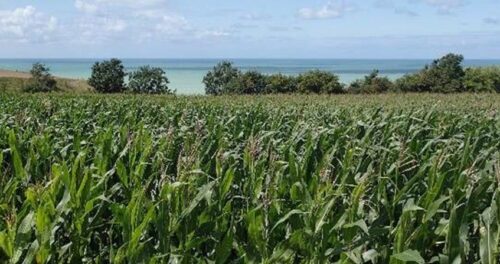In the modern age of industrialization and competition for development, the human race has badly missed its traditions up to major extents and cultures- up to some extent.
Our scientists laboriously invited the Green Revolution to solve the problem of food—a crisis caused by the population explosion. But the poor remained hungry.
Most traditional crop varieties have been replaced by extremely uniform and advanced varieties over large tracts of land. Though this novel and scientific practice enhanced agricultural production, it also invited several species of seriously offensive pests to attack our crops. Being genetically weaker, these advanced and high-yielding varieties of crops remain potentially vulnerable to adverse environmental conditions.
Today, several thousands of traditional, drought-resistant, pest-resistant, and disease-resistant crop varieties have been replaced by hybrid varieties. Thus, our traditional varieties that have stood the test of time have been allowed to go extinct.
The extinction of many of our valued traditional crop varieties occurred due to many factors, including drought, diffusion of advanced cultivars, replacement of one crop by another, attacks of diseases and pests, deforestation and changes in the land use patterns.
Agricultural biodiversity is the foundation of food security. Food security is not just the grain in the godowns; it is enough food for everyone in every home. In this sense, the green revolution could not have served its purpose. It made richer the wealthy farmers and poorer the poorer farmers.
According to a report from the Food and Agricultural Organisation-
Despite its crucial role in feeding the world population, agriculture remains the most significant driver of genetic erosion, species loss and conversion of natural habitats.
The conversion of natural habitats to cropland and other uses typically entails replacing systems rich in biodiversity with monocultures or systems poor in biodiversity. Large-scale agriculture brings ecosystem simplification and loss of (bio) diversity, thus reducing the potential to provide ecosystem services other than food production. Of some 270,000 known species of higher plants, about 10,000 –15,000 are edible and only about 7,000 are used in agriculture. However, globalization and agricultural intensification have diminished traditionally used varieties, with only 30% of the available crop varieties dominating global agriculture. Together with only 14 animal species, these provide an estimated 90% of the world’s consumed calories (FAO, 1998).
Impacts of Genetic Erosion
Gradual loss of genes or genetic erosion leaves our species of plants and animals vulnerable to new environmental and biotic challenges and causes heavy damage to society.
The Irish Potato famine was a dramatic example of the dangers of genetic uniformity. The Irish population had reached about 248.5 million by 1845. Potatoes were the only significant food source for about one-third of the Irish population. Farmers came to rely almost entirely on one very fertile and productive variety known as ‘Aran Banner’. Unfortunately, this particular variety was highly sensitive to the fungal disease late blight (Phytophthora infestans), which had spread from North America to Europe. The blight destroyed the potato crop of 1845. Consequently, the Irish Famine of 1846-50 took as many as one million lives from hunger and disease and changed the social and cultural structure of Ireland in profound ways. The famine also caused emigration of between 1.5 and 2.0 million Irish people.
According to an IUCN report in 2008, agricultural intensification threatened over 4,000 of the assessed plant and animal species globally. With continuing agricultural expansion, this number has increased to over 4,600 species and is still rising.
The IUCN Global Red List 2008 includes 457 globally assessed plants and animals threatened by agriculture in Sub-Saharan Africa. Of these, 65 are critically endangered, and 182 are endangered. Similarly, 683 species are threatened by agriculture in Latin America, of which 146 are critically endangered and 244 endangered.
According to the European Bird Census – 2008, over 1,000 (87%) of 1,226 threatened bird species are impacted by agriculture worldwide. Over 70 species are affected by agricultural pollution, 27 of which are seriously affected. Pesticides and herbicides threaten 37 threatened bird species globally (Birdlife, 2008), in addition to the deleterious effects of agricultural chemicals on groundwater. Domesticated species diversity is also under threat. Worldwide, 6,500 breeds of domesticated mammals and birds are threatened by extinction, reducing the genetic diversity for options in a changing environment.




